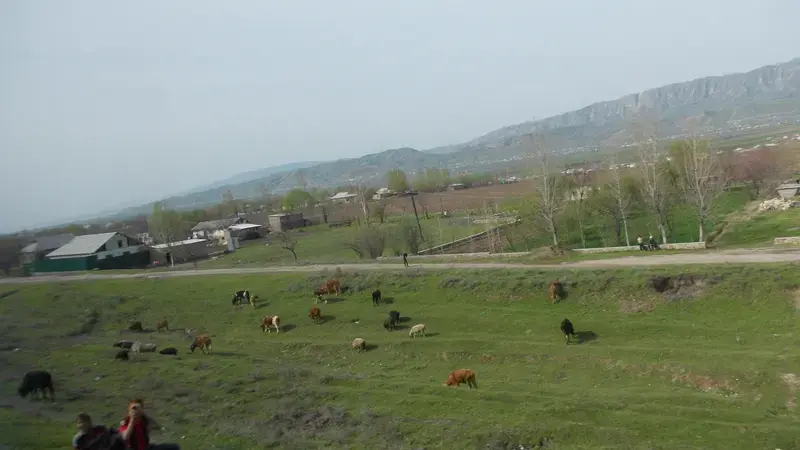Balancing climate related changes in Tajikistan’s farmlands

Tajikistan is a typical example of international injustice of climate change. It is one of the least responsible countries for the greenhouse gas emissions, while being most vulnerable to climate change impacts in the entire Central Asia region. Tajikistan already suffers from low agricultural productivity. In the coming years, with growing climate variations, farmland incomes in Tajikistan are set to see unprecedented changes in the medium and long term.
In a fascinating study on measuring the economic impact of climate change on agriculture in the farmlands in Tajikistan[1] scientists from ICARDA used a Ricardian approach, which is the econometric cross sectional analysis modeling, to observe the medium term (present day until 2070) and long term (present day until 2100) scenarios.
The changes in agriculture revenue were observed in relation to the average temperature and precipitation for winter and summer seasons. Analysis was done at the household and village levels. It was found that the impact of temperature was different in all the regions whereas summer precipitation impacted all the four regions of Soghd, Khatlon, Gorno-Badakhshan Autonomous Province (GBAO) and Regions of Republican Subordination (RRS) in a similar manner.
Tajikistan’s agriculture, which is very sensitive to climate change, will have a profound negative impact in three of the four regions, viz. Soghd, Khatlon and RRS. Agricultural net revenue of these provinces will drop. In Khatlon, the increase in summer precipitation is the main reason for the huge negative impact on agricultural net revenue in this province. Agricultural net revenue in Khatlon province will decrease by more than 200% both in the medium and long terms. In contrast, GBAO province, which is the only one to gain agricultural net revenue, will benefit from increased summer temperatures and decreased precipitation.
In view of the study findings, which suggest that Tajikistan’s agricultural revenue will suffer from a huge average negative impact (−80 to −157%) due to climate change, livestock could be a good agricultural activity to increase Tajikistan’s agriculture resilience to climate change. If the livestock is heat-tolerant it would help decrease the farmers’ vulnerability. Water management can also have important implications in climate change adaptation in Tajikistan.
This study was conducted under the framework of CGIAR Research Programs on Climate Change, Agriculture and Food Security (CCAFS) and Dryland Systems and used the 2007 World Bank Tajikistan Living Standards Survey, soil data from the Food and Agriculture Organization’s soil map and climate data from ICARDA’s GIS Unit.
[1] Closset, M., Dhehibi, B. and Aw-Hassan, A. 2015. Measuring the economic impact of climate change on agriculture: a Ricardian analysis of farmlands in Tajikistan. Climate and Development, Volume 7, Issue 7, pp: 454-468. (http://www.tandfonline.com/doi/abs/10.1080/17565529.2014.989189?journalCode=tcld20)
